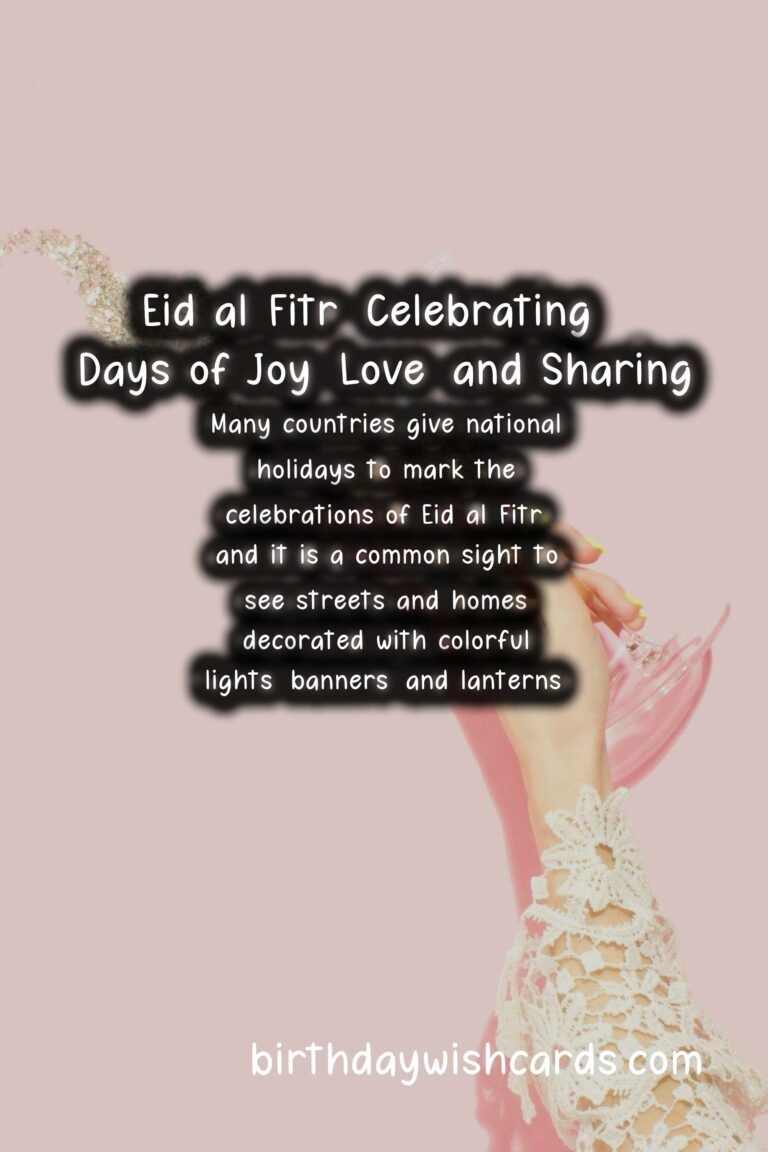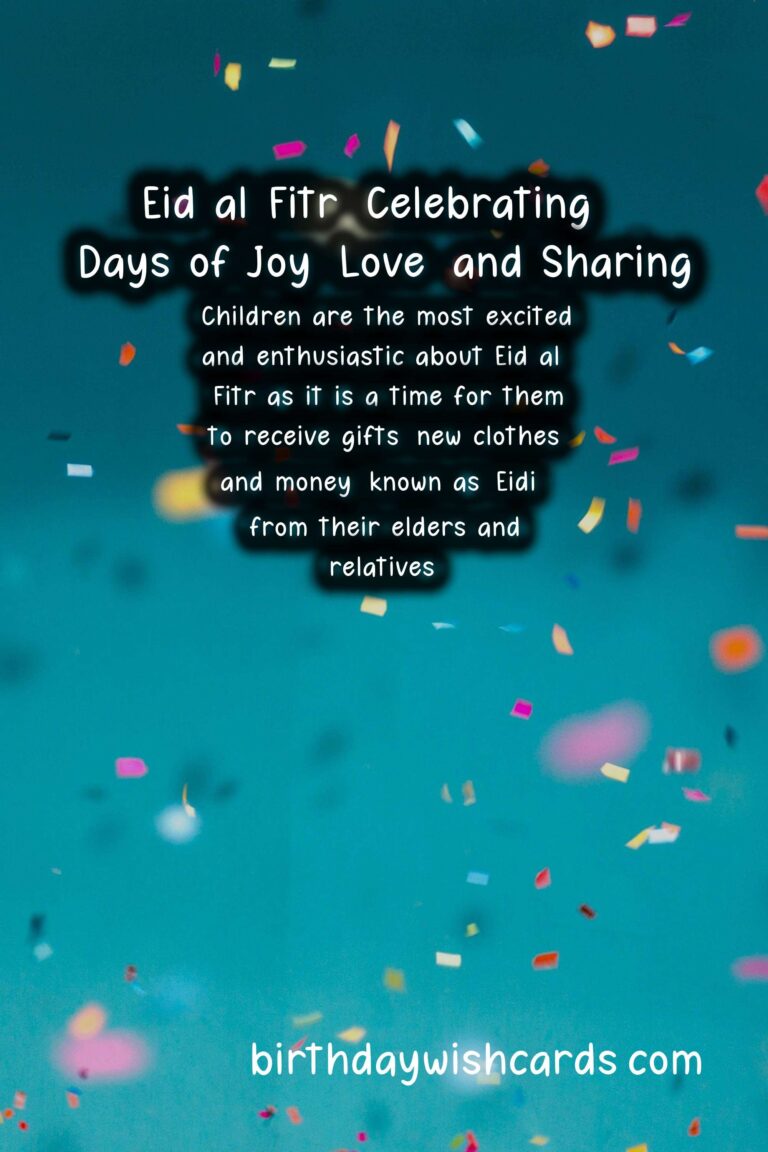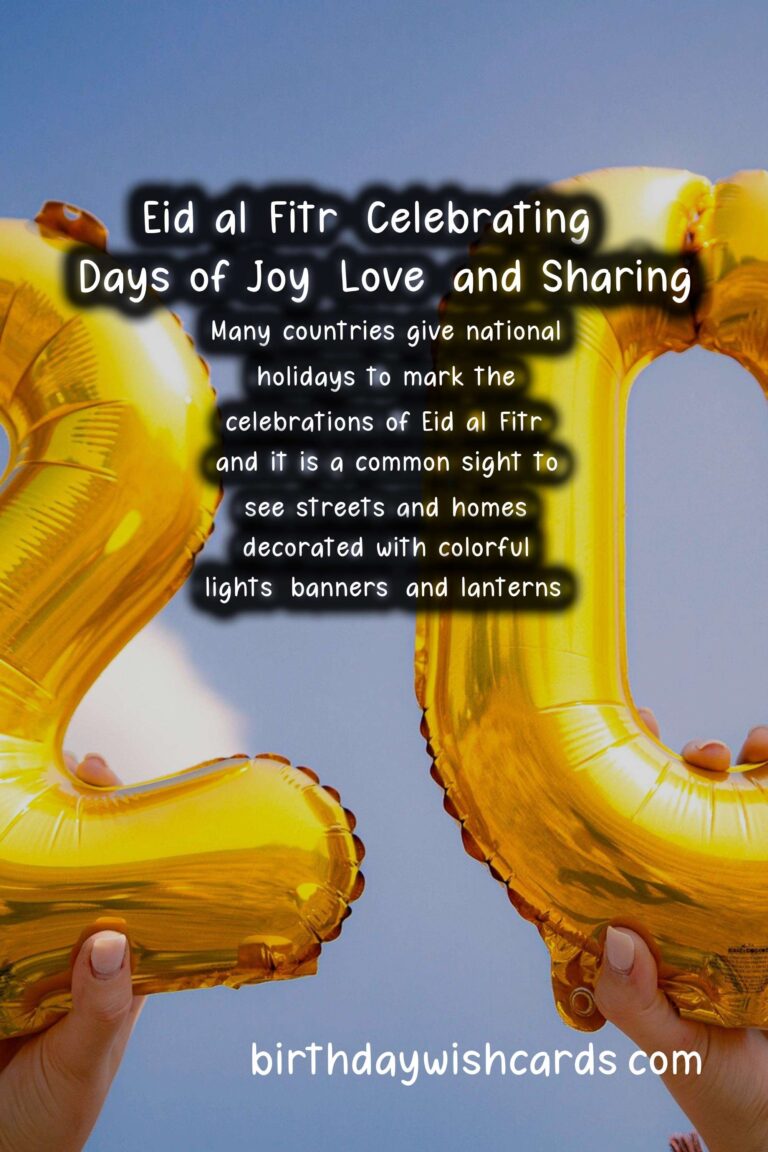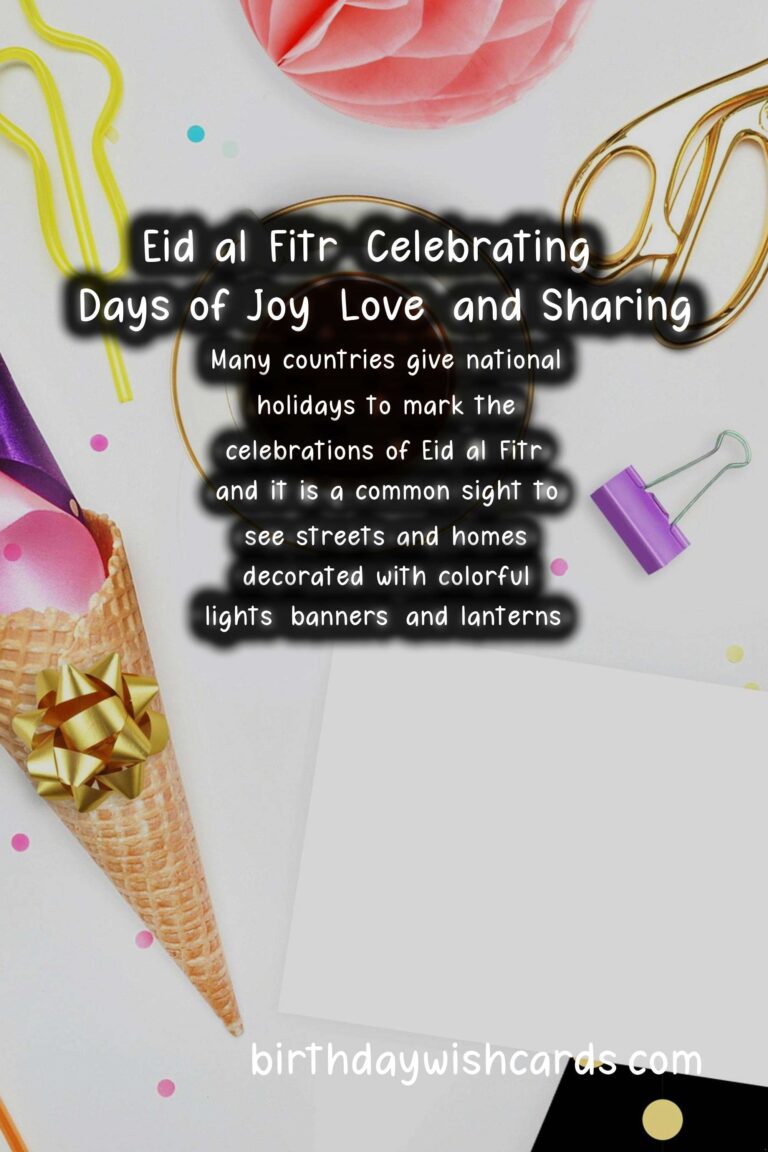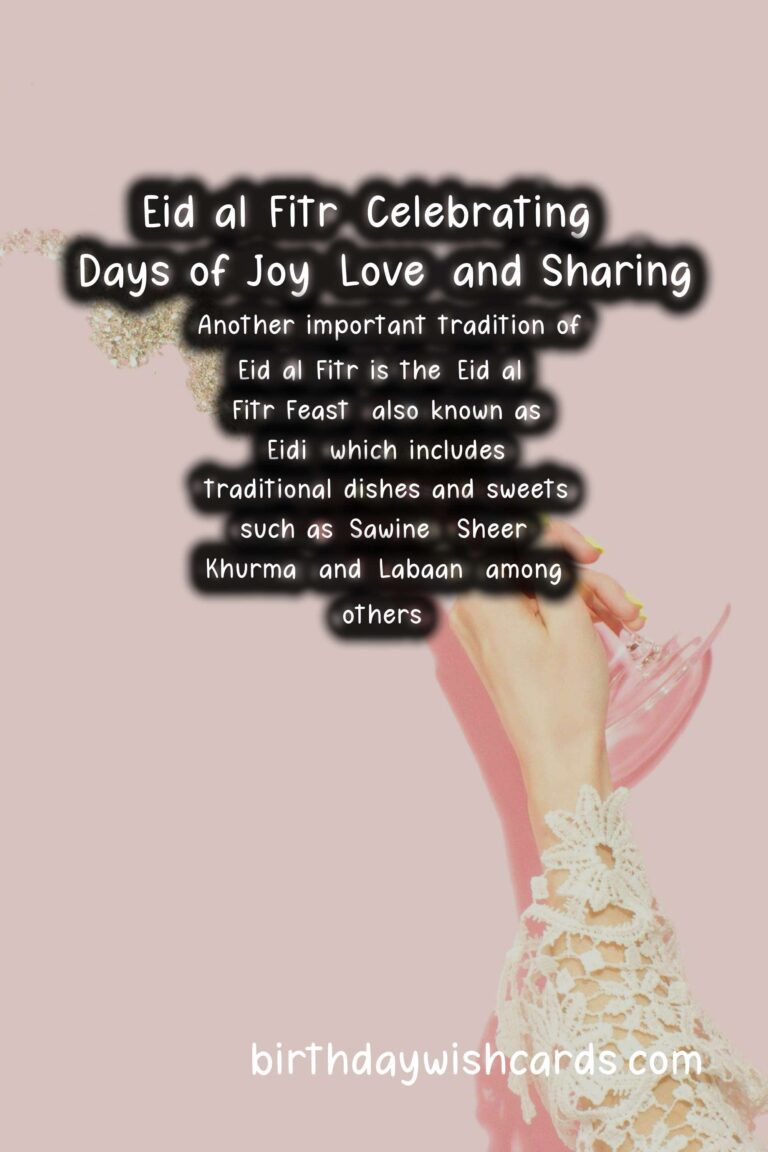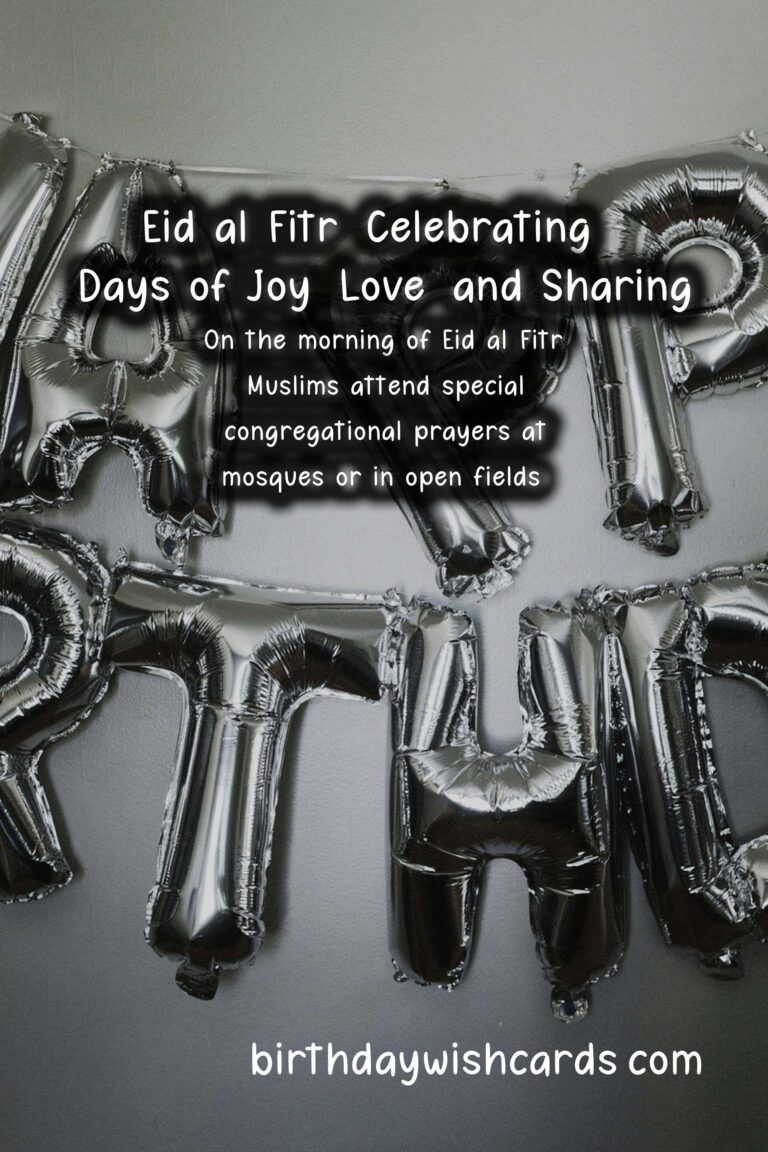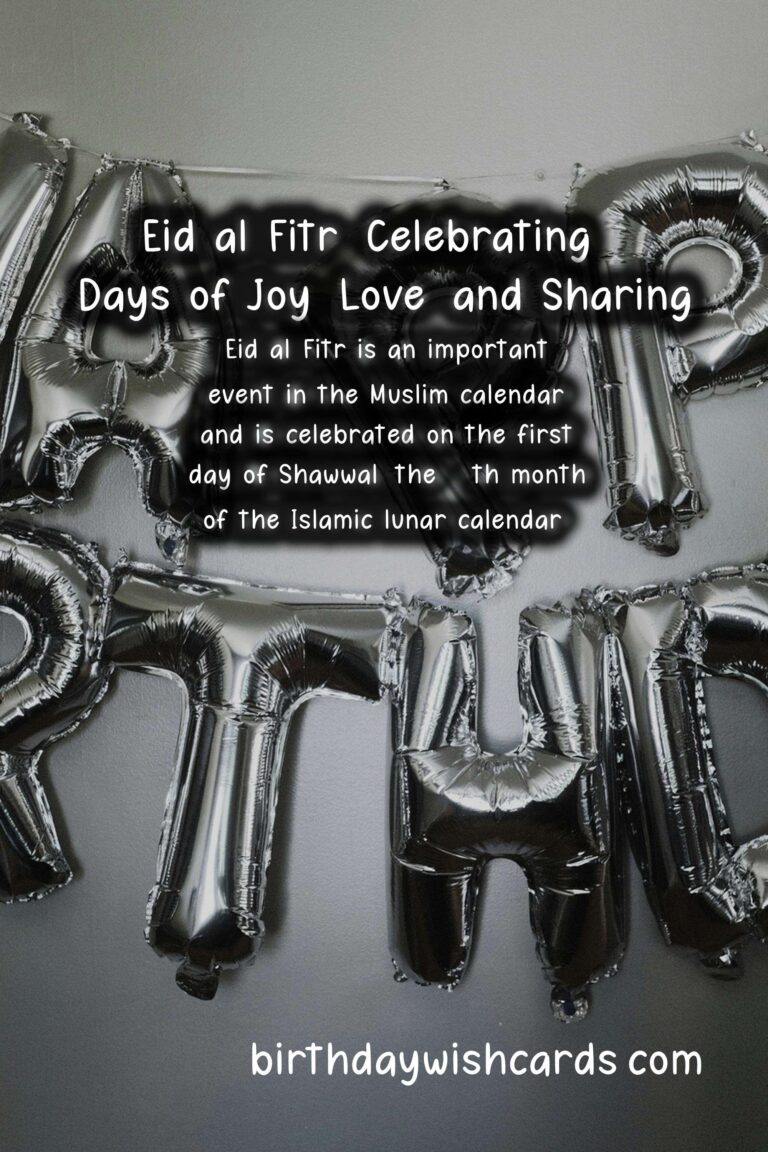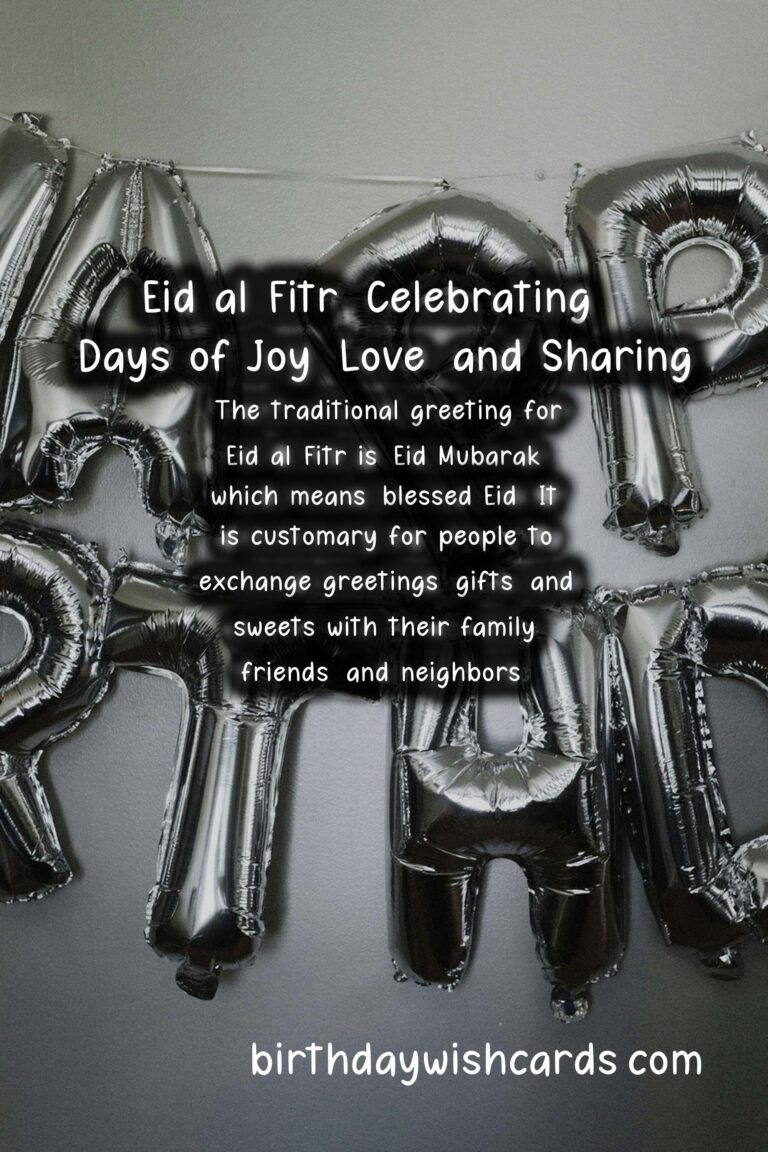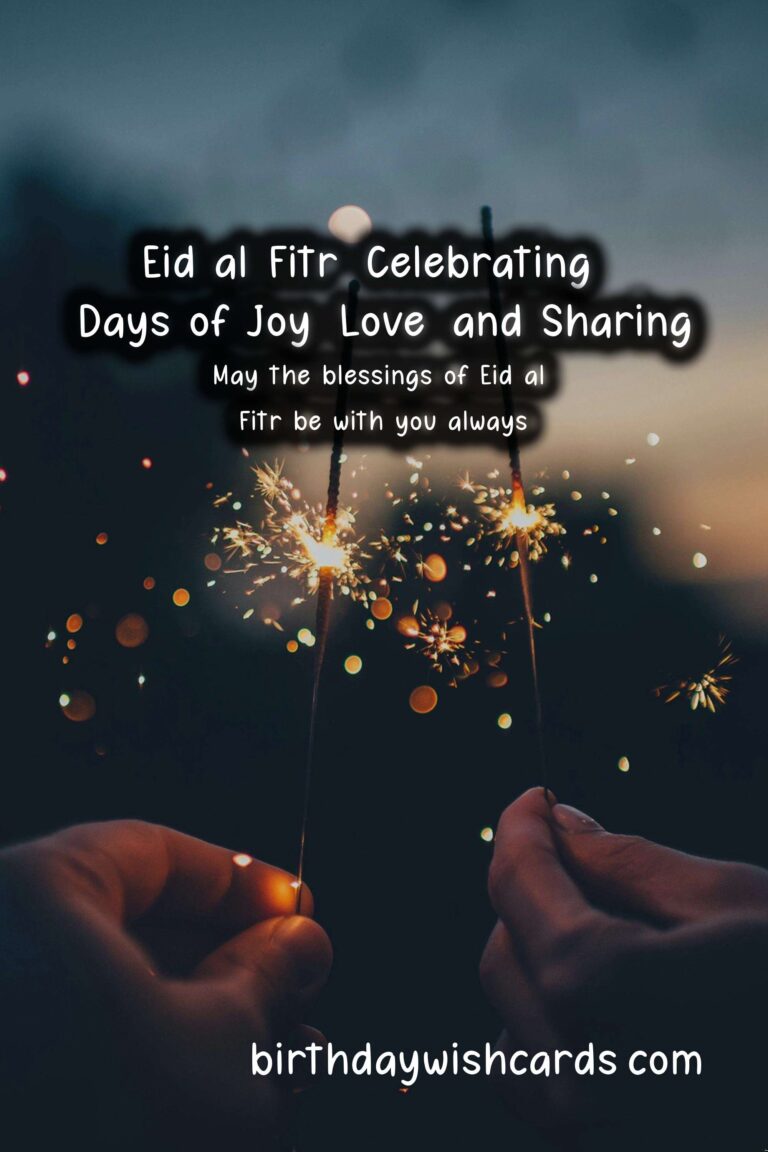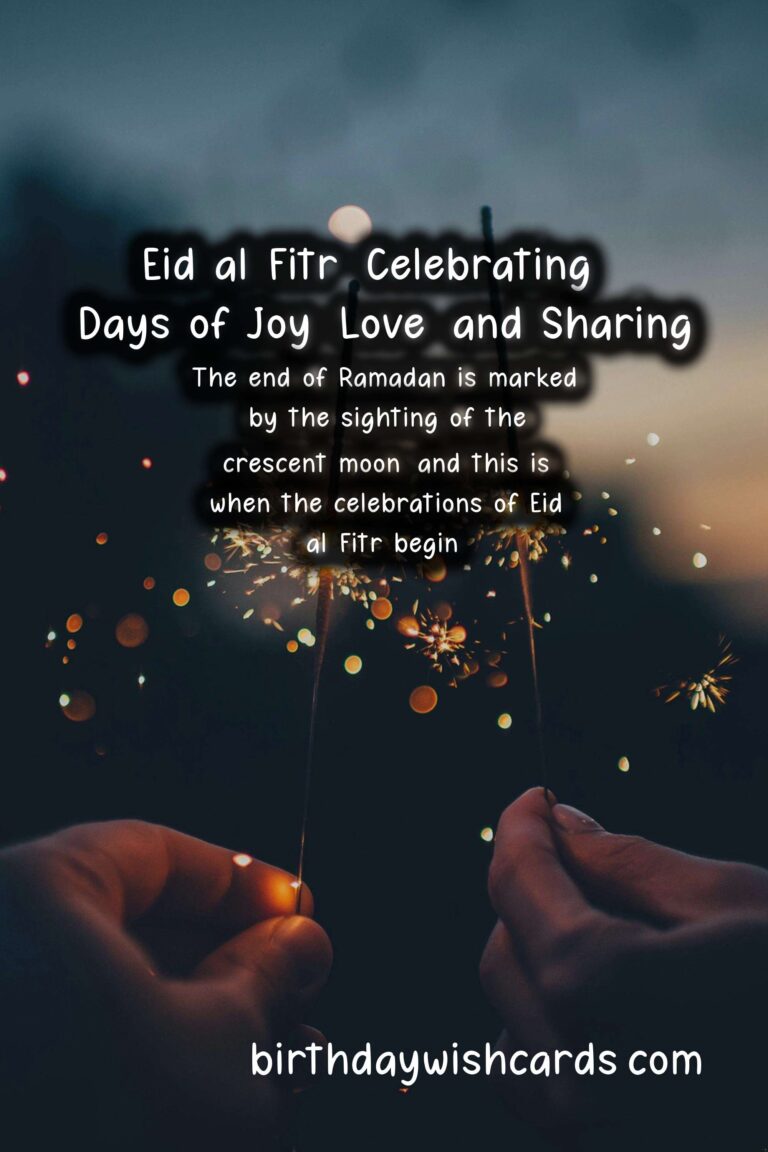 Eid al-Fitr, also known as the ‘Festival of Breaking the Fast,’ is a significant religious holiday celebrated by Muslims all over the world. This joyous occasion marks the end of the spiritual month of Ramadan and commemorates the revelation of the holy Quran to Prophet Muhammad. It is a time of thanksgiving, charity, and celebrations. The festivities last for 3 days and include special prayers, traditional meals, and gift-giving. Let’s dive deeper into the traditions and customs of Eid al-Fitr and learn more about this special holiday. Eid al-Fitr is an important event in the Muslim calendar and is celebrated on the first day of Shawwal, the 10th month of the Islamic lunar calendar. The exact date of Eid al-Fitr is determined based on the sighting of the crescent moon, which indicates the beginning of the new month. Ramadan, the ninth month of the Islamic calendar, is considered to be the holiest month for Muslims as it is believed that the Quran was revealed to Prophet Muhammad during this time. During the month of Ramadan, Muslims fast from sunrise to sunset, abstaining from food, drinks, smoking, and other worldly pleasures as a means of self-control and spiritual purification. The end of Ramadan is marked by the sighting of the crescent moon, and this is when the celebrations of Eid al-Fitr begin. The traditional greeting for Eid al-Fitr is ‘Eid Mubarak’ which means ‘blessed Eid.’ It is customary for people to exchange greetings, gifts, and sweets with their family, friends, and neighbors. On the morning of Eid al-Fitr, Muslims attend special congregational prayers at mosques or in open fields. Before leaving for the prayers, it is recommended to consume a small, sweet meal, known as ‘Sunnah,’ which is believed to emulate Prophet Muhammad’s actions. The special prayers are led by an Imam and consist of two units, with additional prayers and sermons. After the prayers, Muslims greet each other and embrace in a gesture of love and solidarity. One significant aspect of Eid al-Fitr is the ‘Zakat al-Fitr’ which is a mandatory charitable contribution of food or money given to the less fortunate before the Eid prayers. Another important tradition of Eid al-Fitr is the ‘Eid al-Fitr Feast,’ also known as ‘Eidi,’ which includes traditional dishes and sweets such as ‘Sawine,’ ‘Sheer Khurma,’ and ‘Labaan,’ among others. It is customary for people to wear new and festive clothes on the day of Eid al-Fitr, and many opt for traditional attires, such as ‘Salwar Kameez’ and ‘Kurta’ for men, and ‘Abaya’ and ‘Hijab’ for women. Children are the most excited and enthusiastic about Eid al-Fitr as it is a time for them to receive gifts, new clothes, and money, known as ‘Eidi,’ from their elders and relatives. Many countries give national holidays to mark the celebrations of Eid al-Fitr, and it is a common sight to see streets and homes decorated with colorful lights, banners, and lanterns. Eid al-Fitr is also a time for forgiveness and reconciliation, as individuals apologize to their loved ones and seek forgiveness for past wrongdoings. In addition to the above customs, many Muslims also perform ‘Umrah,’ the lesser pilgrimage to Mecca, during this time. The celebrations of Eid al-Fitr may vary from region to region, but the essence of this holiday remains the same – to foster love, unity, and generosity among people. This year, Eid al-Fitr falls on May 23rd, and we hope this special occasion brings peace, harmony, and happiness into your lives and the lives of your loved ones. Eid Mubarak to all! May the blessings of Eid al-Fitr be with you always.
Eid al-Fitr, also known as the ‘Festival of Breaking the Fast,’ is a significant religious holiday celebrated by Muslims all over the world. This joyous occasion marks the end of the spiritual month of Ramadan and commemorates the revelation of the holy Quran to Prophet Muhammad. It is a time of thanksgiving, charity, and celebrations. The festivities last for 3 days and include special prayers, traditional meals, and gift-giving. Let’s dive deeper into the traditions and customs of Eid al-Fitr and learn more about this special holiday. Eid al-Fitr is an important event in the Muslim calendar and is celebrated on the first day of Shawwal, the 10th month of the Islamic lunar calendar. The exact date of Eid al-Fitr is determined based on the sighting of the crescent moon, which indicates the beginning of the new month. Ramadan, the ninth month of the Islamic calendar, is considered to be the holiest month for Muslims as it is believed that the Quran was revealed to Prophet Muhammad during this time. During the month of Ramadan, Muslims fast from sunrise to sunset, abstaining from food, drinks, smoking, and other worldly pleasures as a means of self-control and spiritual purification. The end of Ramadan is marked by the sighting of the crescent moon, and this is when the celebrations of Eid al-Fitr begin. The traditional greeting for Eid al-Fitr is ‘Eid Mubarak’ which means ‘blessed Eid.’ It is customary for people to exchange greetings, gifts, and sweets with their family, friends, and neighbors. On the morning of Eid al-Fitr, Muslims attend special congregational prayers at mosques or in open fields. Before leaving for the prayers, it is recommended to consume a small, sweet meal, known as ‘Sunnah,’ which is believed to emulate Prophet Muhammad’s actions. The special prayers are led by an Imam and consist of two units, with additional prayers and sermons. After the prayers, Muslims greet each other and embrace in a gesture of love and solidarity. One significant aspect of Eid al-Fitr is the ‘Zakat al-Fitr’ which is a mandatory charitable contribution of food or money given to the less fortunate before the Eid prayers. Another important tradition of Eid al-Fitr is the ‘Eid al-Fitr Feast,’ also known as ‘Eidi,’ which includes traditional dishes and sweets such as ‘Sawine,’ ‘Sheer Khurma,’ and ‘Labaan,’ among others. It is customary for people to wear new and festive clothes on the day of Eid al-Fitr, and many opt for traditional attires, such as ‘Salwar Kameez’ and ‘Kurta’ for men, and ‘Abaya’ and ‘Hijab’ for women. Children are the most excited and enthusiastic about Eid al-Fitr as it is a time for them to receive gifts, new clothes, and money, known as ‘Eidi,’ from their elders and relatives. Many countries give national holidays to mark the celebrations of Eid al-Fitr, and it is a common sight to see streets and homes decorated with colorful lights, banners, and lanterns. Eid al-Fitr is also a time for forgiveness and reconciliation, as individuals apologize to their loved ones and seek forgiveness for past wrongdoings. In addition to the above customs, many Muslims also perform ‘Umrah,’ the lesser pilgrimage to Mecca, during this time. The celebrations of Eid al-Fitr may vary from region to region, but the essence of this holiday remains the same – to foster love, unity, and generosity among people. This year, Eid al-Fitr falls on May 23rd, and we hope this special occasion brings peace, harmony, and happiness into your lives and the lives of your loved ones. Eid Mubarak to all! May the blessings of Eid al-Fitr be with you always. 
